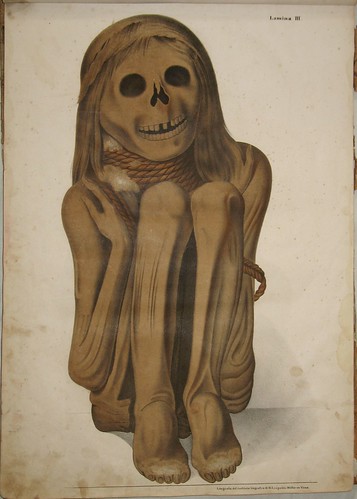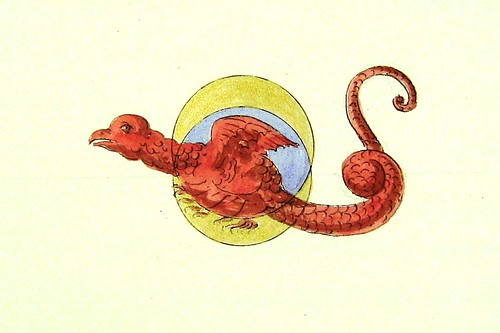
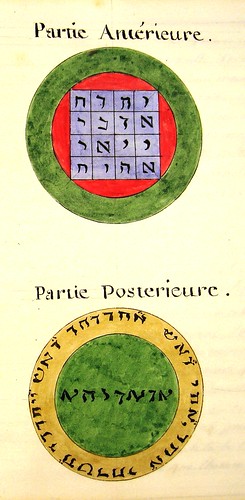
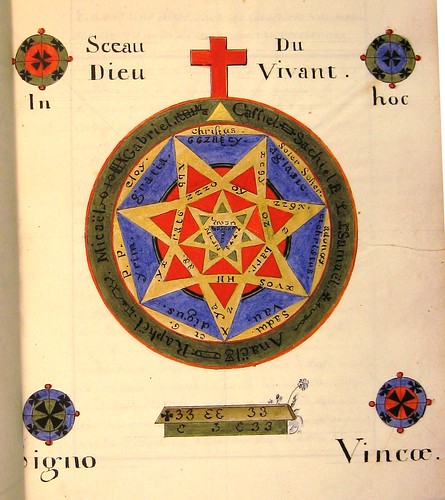
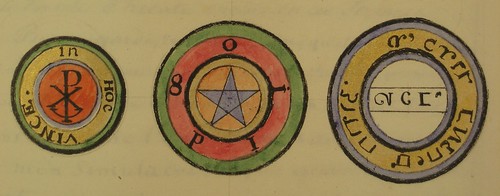

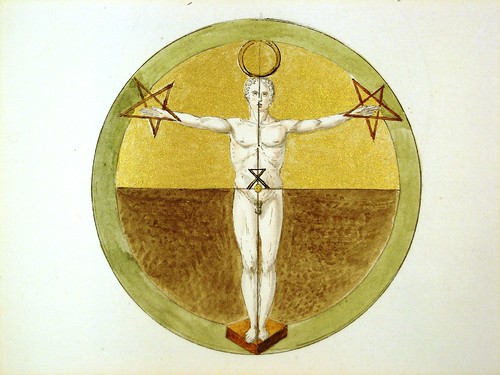


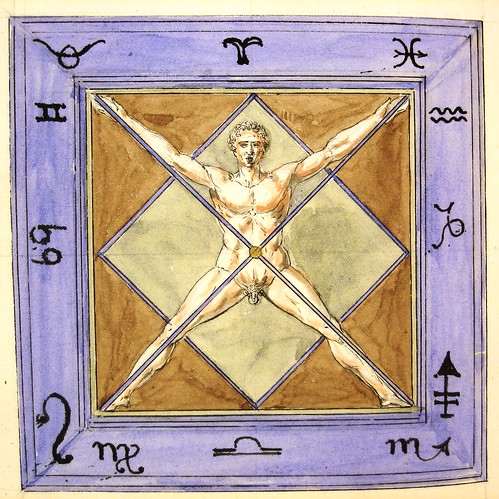

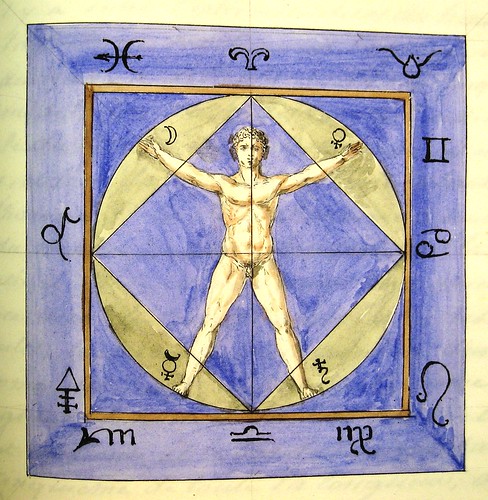
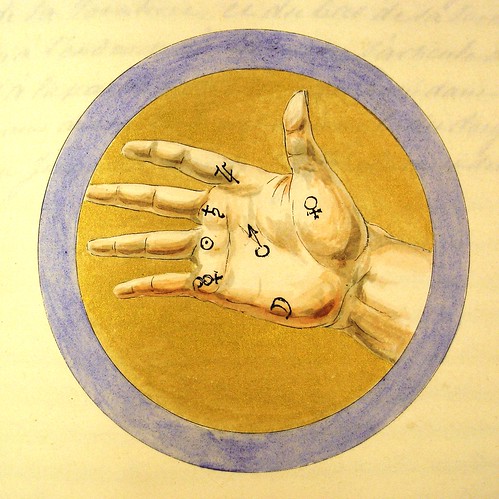
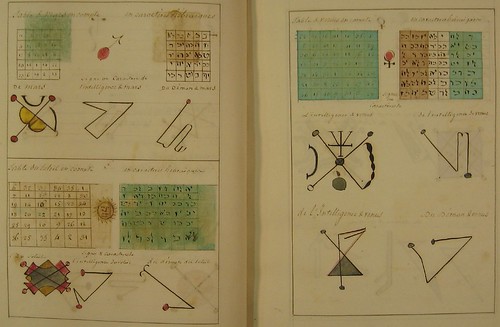
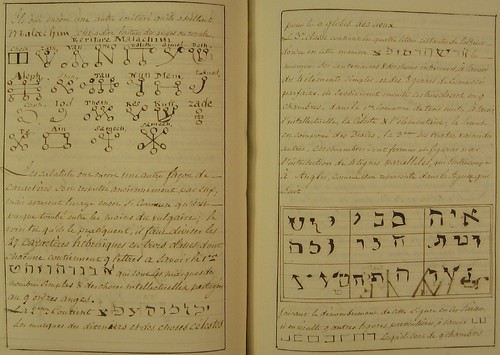
[These cropped details are linked to go through to the large format images of the original complete pages (there are even larger versions available)]
"One of the more unusual and exotic treasures of The University of Newcastle is a French magical manuscript entitled 'Talismans Cabalistiques Magiques, grands secretes des Planettes'. The manuscript from an unknown scribe bears the date 1704 in the reign of the Sun King Louis XIV, le Grand Monarque and le Roi Soleil (1638-1715).
The book is a compendium of information relating to the manufacture of celestial talismans [...][and] consists of an eclectic re-arrangement of chapters from Henry Cornelius Agrippa’s 'De Occulta Philosophia' (Three Books of Occult Philosophy) originally published in full in 1533."
'Talismans Cabalistiques Magiques' was uploaded in two sets by the staff of Auchmuty Library (Newcastle University, Australia): The first is the complete 456 page manuscript in 260 images. The second (where most of the above images were obtained) contains the artistic details in closeup.
The Archivist at the University of Newcastle, Gionni Di Gravio, gave a radio talk about the manuscript in July 2007 and a summary (and much more information) is available from the University of Newcastle Cultural Collections weblog. The talk can be dowloaded from the ABC website. [via]
Just on that general subject of library/repository blogs reviewing their own collections, two other worthy sites have commenced in recent times...
- Room 26 Cabinet of Curiosities is the official blog of the Beinecke Library at Yale University.
- Digitized Book of the Week tracks the collection at the Library of the University of Illinois at Urbana-Champaign.










